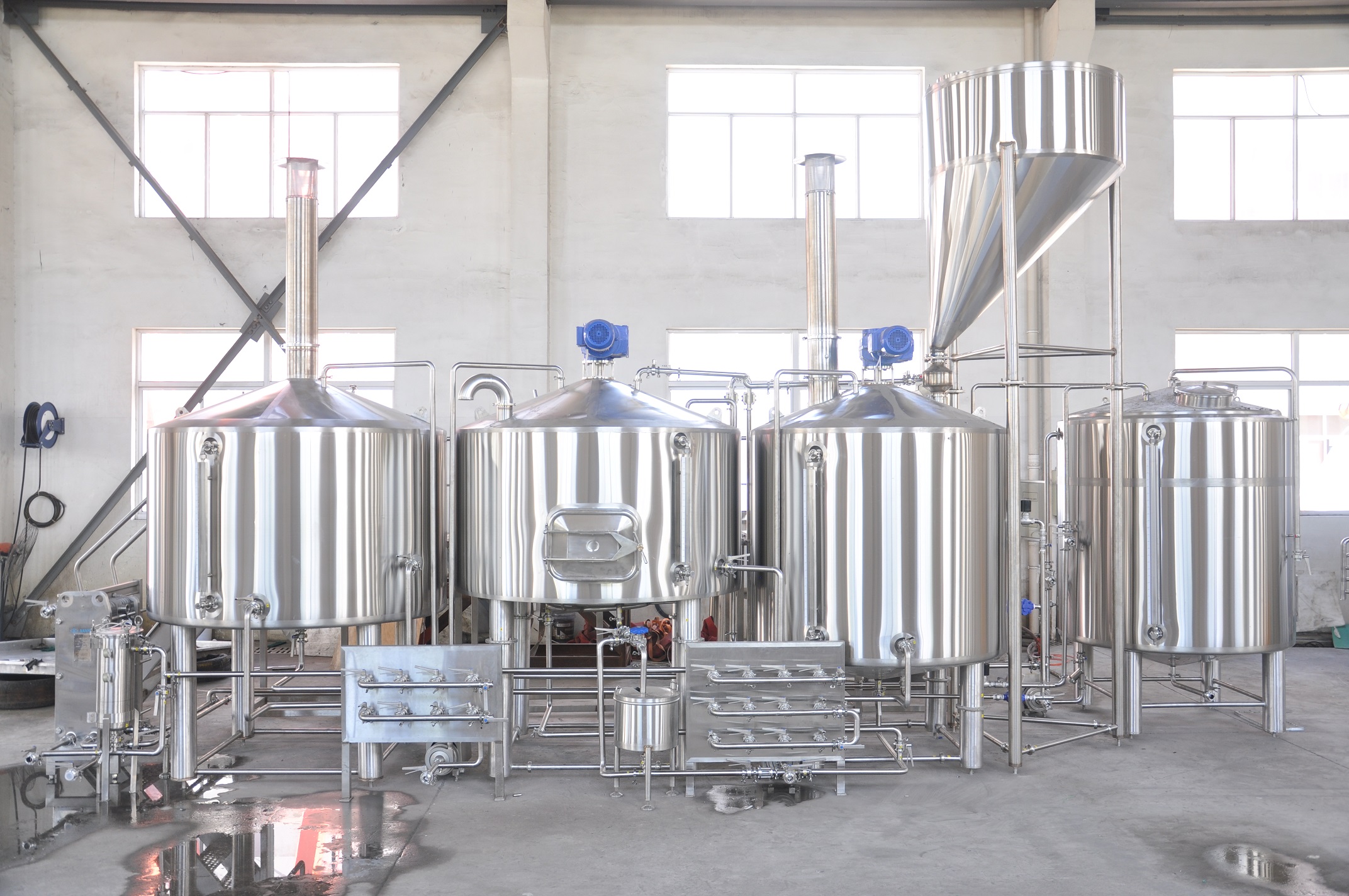
Comprehensive guide for 20 bbl brewing system
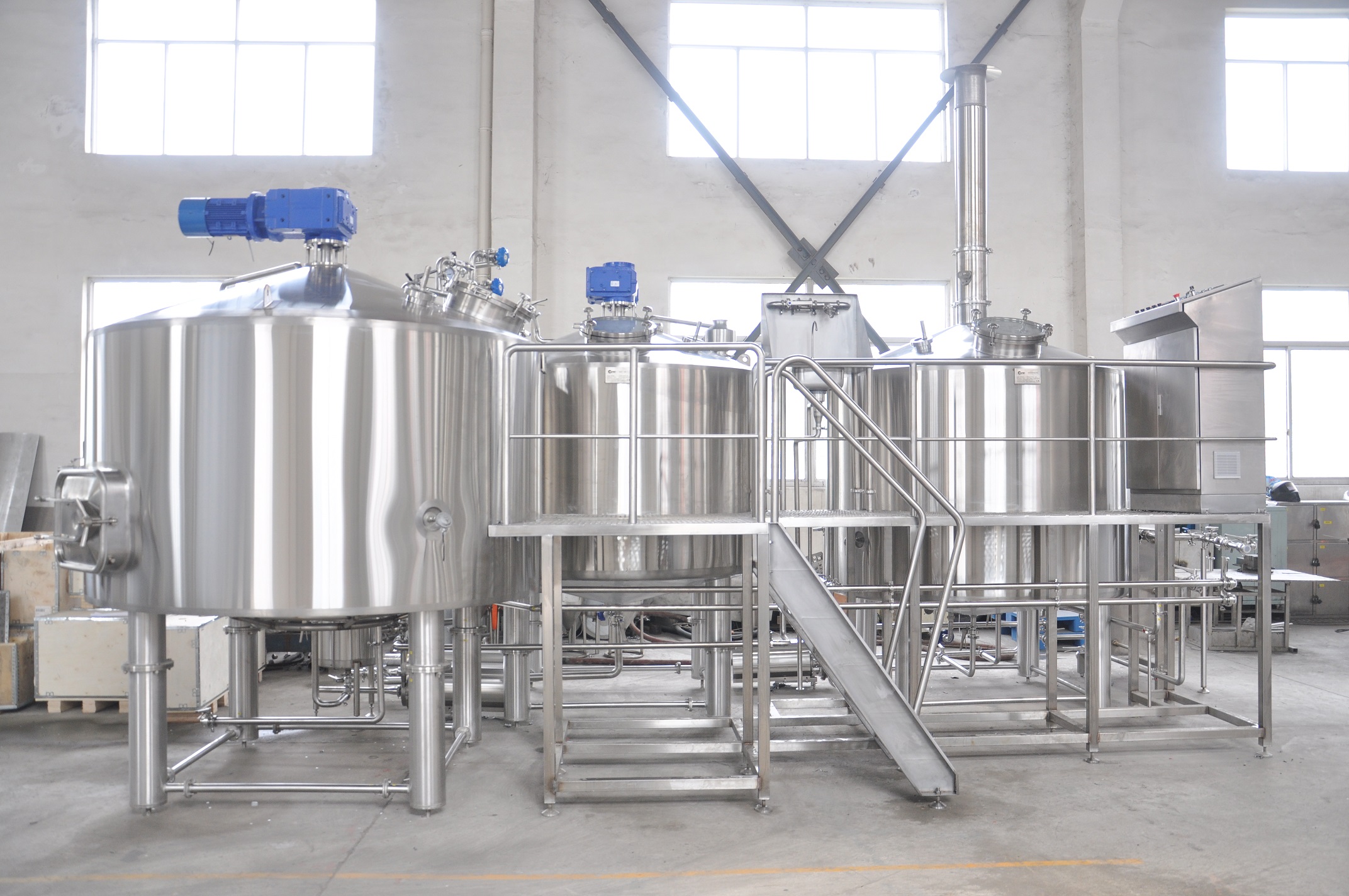
A 20-bbl brewing system, therefore, has a capacity to produce 20 barrels of beer per batch. To give you an idea of the scale, that amounts to around 620 U.S. gallons or approximately 2,347 liters of beer per batch.
1.Components of 20bbl brewing system
A 20-barrel (bbl) brewing system typically consists of several key components that work together to facilitate the brewing process. While the specific setup may vary depending on the brewery’s preferences and production requirements, here are some common components you would typically find in a 20-bbl brewing system:
Grain Mill: A grain mill is used to crush malted grains before mashing. It helps expose the starches inside the grains, which are then converted into fermentable sugars during the mashing process.
Mash Tun: The mash tun is a vessel where the mashing process takes place. It is used to combine crushed malted grains with hot water, allowing enzymes to convert starches into fermentable sugars.
Lauter Tun: The lauter tun is used to separate the liquid wort (the sugar-rich liquid extracted during mashing) from the solid grain material. It typically contains a false bottom or a filtering system to allow the wort to flow out while retaining the grain.
Brew Kettle: The brew kettle, also known as the boiling kettle, is where the wort is boiled with hops and other ingredients. It serves several purposes, such as sterilizing the wort, extracting hop flavors and bitterness, and concentrating the sugars.
Whirlpool Tank: The whirlpool vessel is used to separate the hot trub (coagulated proteins and hop residue) from the boiled wort. It creates a swirling motion that causes the trub to settle in the center, allowing cleaner wort to be drawn off.
Hot Liquor Tank (HLT): The hot liquor tank stores and heats the water used for various purposes in the brewing process, such as mashing, sparging (rinsing the grains), and cleaning.
Cold Liquor tank(CLT): the cold liquor tank store and supply cold water for various purposes during the brewing process, the cold liquor tank plays a crucial role in maintaining temperature control throughout the brewing process, ensuring the proper cooling of wort and providing cold water for cleaning and sparging. It helps brewers achieve consistency and quality in their beer production.
Fermentation Vessels: These vessels are where the cooled wort is transferred for fermentation. They can be cylindrical or conical in shape and are often made of stainless steel. Yeast is added to the wort in these vessels, allowing fermentation to take place, converting sugars into alcohol and carbon dioxide.
Yeast Brink: A yeast brink or yeast propagation vessel is used for yeast management and propagation. It allows brewers to prepare and store yeast cultures for pitching into the fermentation vessels.
Bright Tanks: Bright tanks, also referred to as conditioning tanks or serving tanks, are used for secondary fermentation, carbonation, and conditioning of the beer. They are typically equipped with a carbonation stone and a pressure relief valve to achieve the desired level of carbonation and clarity before packaging.
Cooling System: A 20-bbl brewing system requires a cooling system to control temperatures at various stages of the brewing process. This system may include glycol chillers, heat exchangers, or cooling jackets integrated into vessels to cool the wort, fermenters, and bright tanks.
Pumps and Piping: Pumps and piping are essential for transferring liquids between vessels during the brewing process. They help move hot water, wort, and beer from one vessel to another efficiently and with precise control.
Control Panel: A control panel is the central hub that allows brewers to monitor and regulate various parameters during the brewing process, such as temperature, pressure, and timing. It provides a user interface to control valves, pumps, and other components.
Cleaning System: A brewing system requires a cleaning system to ensure proper sanitation and hygiene. This may include CIP systems that use chemicals and high-temperature water to clean vessels, pipes, and other equipment.
These are some of the core components you would find in a 20-bbl brewing system. Breweries may also have additional equipment such as grain mills, a yeast propagation system, filtration systems, and packaging equipment, depending on their specific needs and production scale.
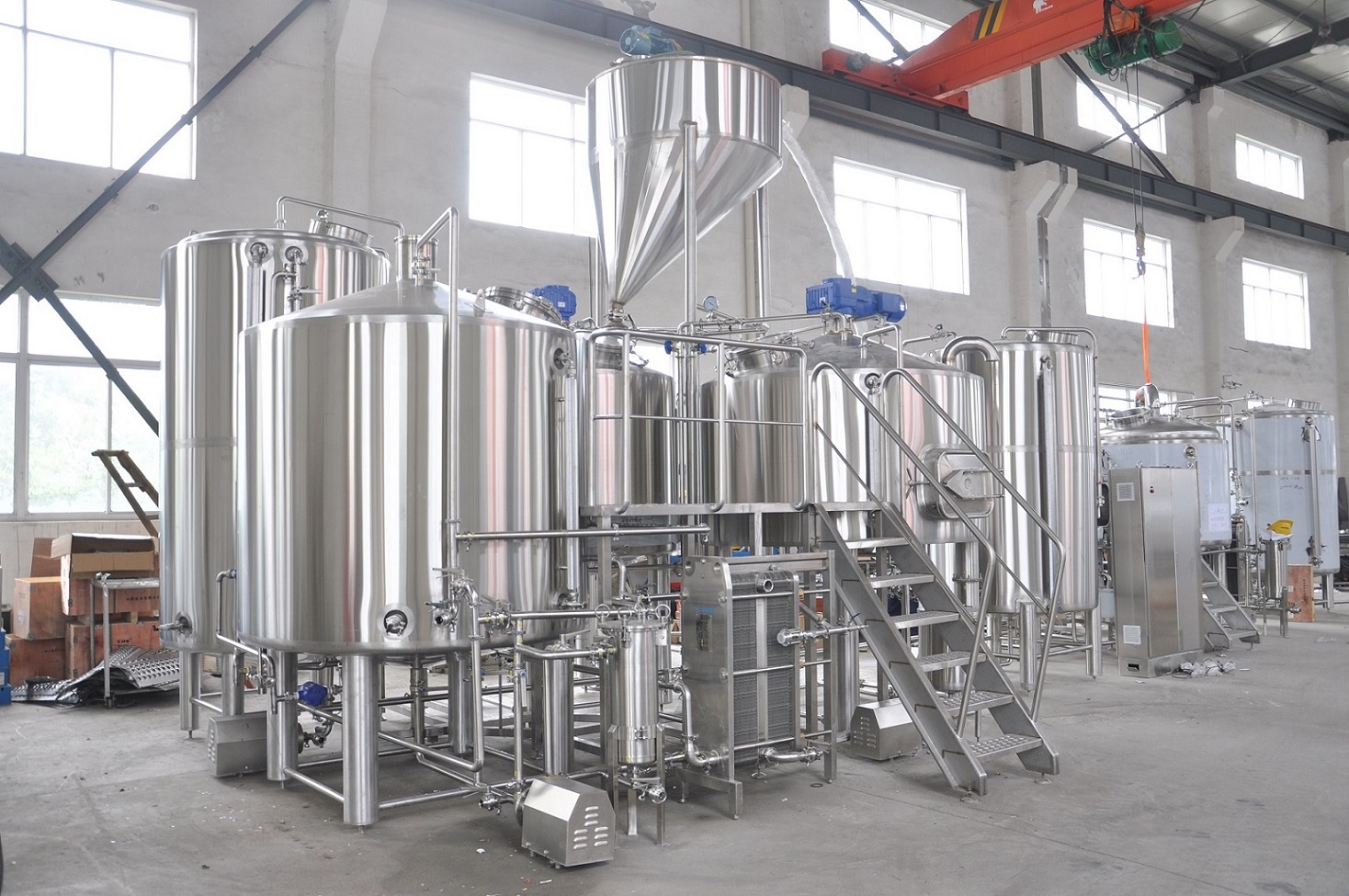
2.What kind of brewery is suitable for installing 20bbl brewing system?
A 20-barrel (bbl) brewing system is typically suitable for a medium-sized or regional craft brewery. It can produce a significant volume of beer per batch, allowing the brewery to meet the demands of a local market or distribute its products to a wider region.
Here are some considerations for determining the suitability of a 20-bbl brewing system for a brewery:
Production Volume: A 20-bbl system is capable of producing approximately 620 U.S. gallons or around 2,340liters of beer per batch. This volume can cater to a moderate level of demand, making it appropriate for breweries aiming to supply local bars, restaurants, and retail establishments.
Market Reach: Consider the target market and the distribution range of the brewery. A 20-bbl system is well-suited for regional distribution, supplying beer to a specific geographic area rather than a nationwide or international market.
Growth Plans: Evaluate the growth plans and aspirations of the brewery. If there are plans to expand production and increase market presence over time, a 20-bbl system offers room for growth without immediately investing in a larger brewing system.
Production Efficiency: A 20-bbl system can provide a good balance between production efficiency and artisanal craft brewing. It allows for a level of manual control and experimentation while still benefiting from some automated processes to streamline production.
Space and Investment: Consider the available physical space for the brewery and the budget for equipment and infrastructure. A 20-bbl system requires a significant space allocation for brewhouse components, fermentation vessels, and storage areas.
Local Market Analysis: Conduct a thorough analysis of the local market and its beer consumption patterns. Evaluate the demand for craft beer, competition from existing breweries, and growth potential to ensure the market can support the production volume of a 20-bbl system.
Ultimately, the suitability of a 20-bbl brewing system depends on the specific goals, market dynamics, and resources of the brewery. It provides a mid-sized brewing capacity that is ideal for medium-sized breweries aiming to serve a local or regional market while allowing room for future growth.
3.What advantage of 20bbl brewing system
A 20-barrel (bbl) brewing system offers several advantages for breweries:
Increased Production Volume: Compared to smaller brewing systems, a 20-bbl system allows for a higher production volume per batch. This increased capacity enables breweries to meet the demands of a larger customer base or expand distribution to a wider market.
Operational Efficiency: A 20-bbl system can provide improved operational efficiency compared to smaller systems. With larger vessels and automated processes, breweries can streamline their production workflows, reducing labor and time requirements.
Consistency and Quality: A larger brewing system often includes advanced automation and control features, which contribute to greater consistency in the brewing process. This helps maintain a high level of beer quality and ensures that each batch is brewed to the desired specifications.
Room for Growth: A 20-bbl system provides a scalable platform for breweries with growth ambitions. It offers a significant production capacity while allowing room for future expansion without immediately investing in larger equipment. Breweries can gradually increase their production volumes as they establish a customer base and market presence.
Cost Efficiency: While a 20-bbl system requires a higher initial investment compared to smaller systems, it can be more cost-effective in the long run. By increasing production volume per batch, breweries can achieve economies of scale, reducing the per-unit production cost and potentially increasing profit margins.
Flexibility in Recipe Development: With a larger brewing system, breweries have more flexibility for recipe development and experimentation. They can produce a wider range of beer styles and variations, catering to diverse consumer preferences and expanding their product portfolio.
Market Competitiveness: A 20-bbl system positions breweries to compete effectively in the craft beer market. It provides the capability to produce beer at a commercial scale, making it easier to establish distribution channels, secure retail placements, and compete with larger breweries and national brands.
Brand Image and Growth Potential: A brewery with a 20-bbl system can project a professional image and foster brand recognition. The increased production volume allows for consistent supply and potential expansion into new markets, attracting more customers and facilitating business growth.
These advantages make a 20-bbl brewing system an attractive choice for breweries looking to operate at a medium-sized scale, balancing production capacity, efficiency, and growth potential while maintaining a focus on quality craft beer.
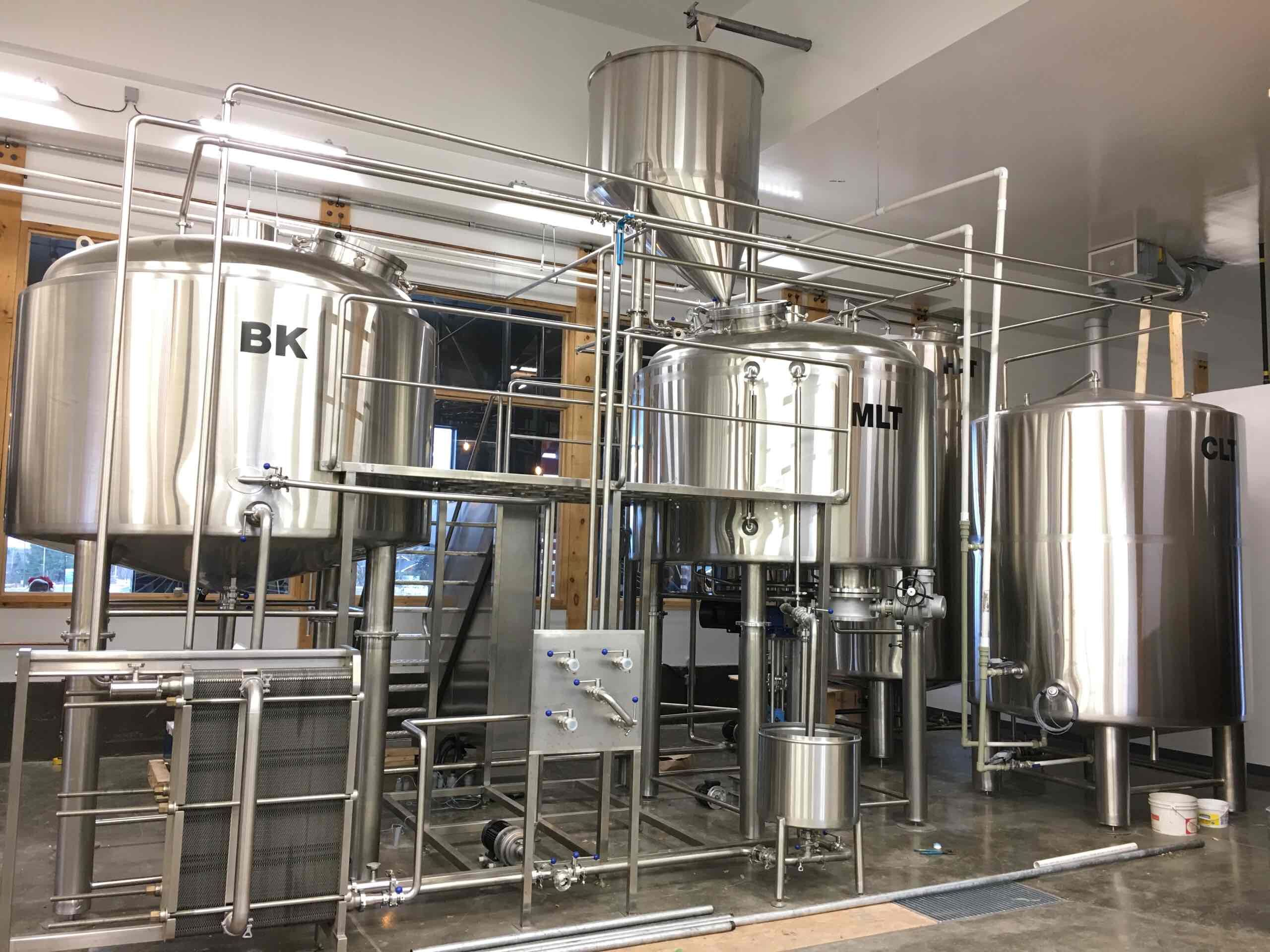
4.What should I pay attention to when installing 20bbl brewing system
When installing a 20-barrel (bbl) brewing system, there are several key aspects you should pay attention to:
Space and Layout: Ensure that you have adequate space for the brewing system, including the brewhouse components, fermentation vessels, storage areas, and other necessary equipment. Plan the layout carefully to maximize efficiency, workflow, and safety within the available space.
Infrastructure Requirements: Assess and prepare the necessary infrastructure for the brewing system. This includes utilities such as water supply, drainage, electrical power, steam or gas supply (if applicable), and ventilation. Consult with professionals to ensure compliance with local building codes and regulations.
Equipment Selection: Choose reliable and reputable suppliers for your brewing equipment. Consider factors such as quality, durability, service and support, and the specific features required for your brewing processes. Work closely with equipment manufacturers to ensure the system is customized to your brewery’s needs.
Installation and Commissioning: Engage experienced professionals or technicians to handle the installation and commissioning of the brewing system. This ensures proper setup, alignment, and connection of all components, as well as testing for functionality and safety.
Utilities and Services: Ensure that your brewery has access to the required utilities and services. This includes a reliable water supply with appropriate quality (filtered or treated if necessary), drainage systems to handle wastewater, and sufficient electrical capacity to power the brewing equipment.
Safety Considerations: Prioritize safety during installation. Provide proper safety equipment, training, and protocols for your staff. Install safety features such as emergency shut-off valves, fire prevention measures, and adequate ventilation systems. Comply with safety standards and regulations to create a safe working environment.
Workflow and Efficiency: Plan the workflow of your brewing process to optimize efficiency and productivity. Consider factors such as the arrangement of vessels and equipment, the flow of raw materials and finished products, and the convenience of access for maintenance and cleaning.
Automation and Control: Decide on the level of automation and control you require for your brewing processes. Automation can improve consistency, accuracy, and efficiency. Implement a suitable control system and user interface that allows you to monitor and adjust parameters effectively.
Training and Documentation: Ensure that your brewing staff receives adequate training on the operation and maintenance of the brewing system. Keep detailed documentation of equipment manuals, standard operating procedures (SOPs), and maintenance schedules for future reference and troubleshooting.
Regulatory Compliance: Understand and comply with relevant regulations and licensing requirements specific to your location and the brewing industry. This includes permits for brewing, wastewater management, health and safety regulations, and any local or regional regulations that apply to your brewery.
By paying attention to these aspects during the installation of your 20-bbl brewing system, you can set a solid foundation for efficient and safe brewery operations, ensuring the successful integration and functionality of your brewing equipment.
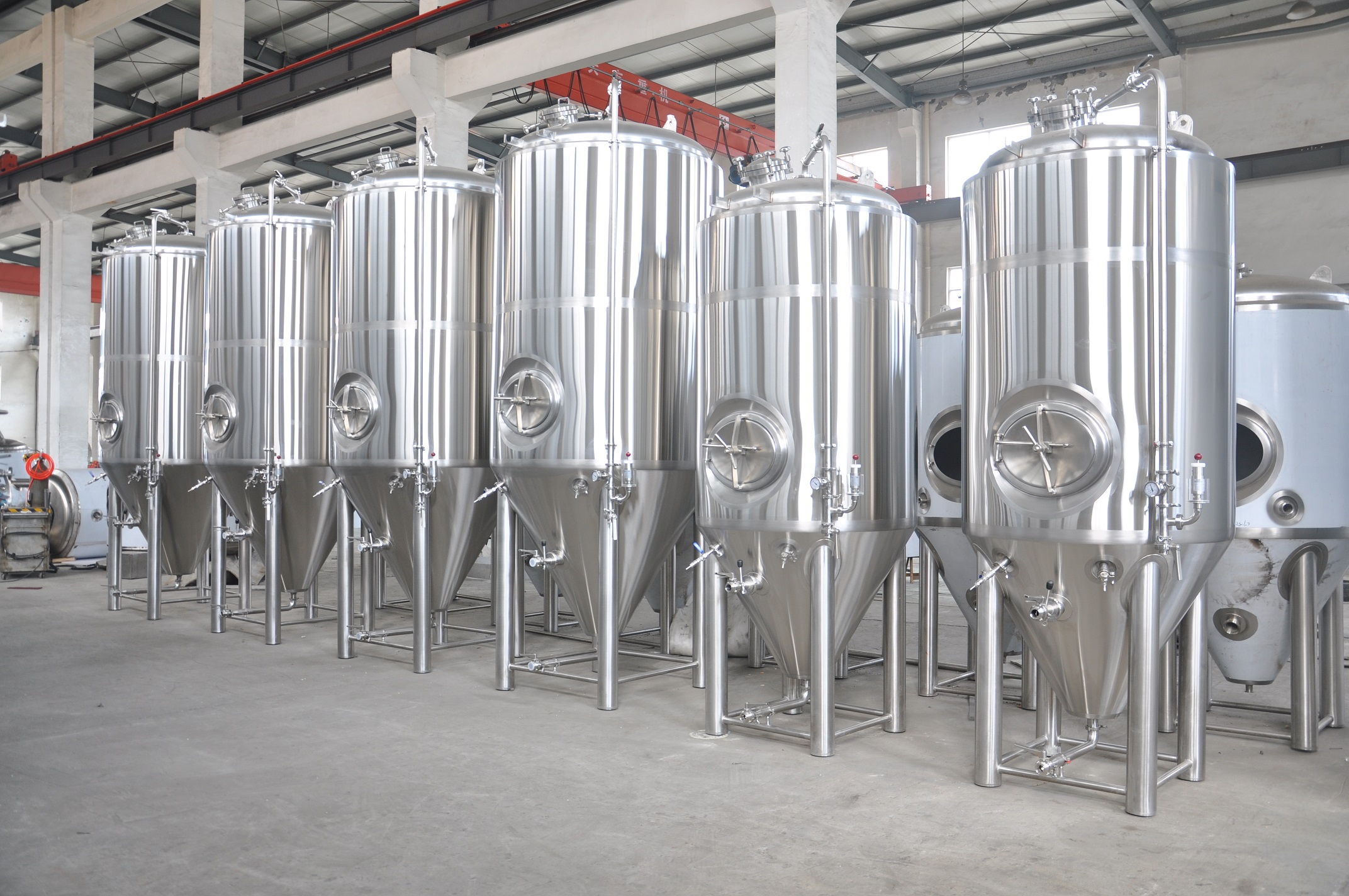
5.Maintenance and repair for 20bbl brewing system
Maintenance and repair are essential aspects of operating a 20-barrel (bbl) brewing system to ensure its optimal performance and longevity. Here are some key considerations for maintenance and repair:
Regular Cleaning: Implement a thorough and regular cleaning schedule for all brewing system components. This includes vessels, pipelines, pumps, and other equipment. CIP systems can help automate and streamline the cleaning process.
Preventive Maintenance: Develop a preventive maintenance program to identify and address potential issues before they escalate. Regularly inspect and maintain key components such as valves, seals, gaskets, motors, pumps, and temperature sensors. Follow the manufacturer’s guidelines for maintenance intervals and procedures.
Spare Parts Inventory: Maintain an inventory of commonly used spare parts specific to your brewing system. This includes seals, gaskets, O-rings, valves, motors, and other critical components. Having spare parts readily available can minimize downtime in case of equipment failure.
Equipment Calibration: Regularly calibrate temperature sensors, pressure gauges, flow meters, and other monitoring instruments to ensure accurate readings and reliable control of brewing processes.
Lubrication: Follow the manufacturer’s recommendations for lubricating moving parts such as pumps, motors, and valves. Proper lubrication helps reduce friction, wear, and potential failures.
Equipment Inspections: Conduct routine inspections of all brewing system components to identify signs of wear, leaks, or other issues. This includes checking welds, fittings, connections, and seals. Promptly address any identified problems.
Staff Training: Provide training to your brewing staff on the proper operation, maintenance, and troubleshooting of the brewing system. Educate them on best practices for equipment handling, cleaning, and basic repairs. This empowers your team to address minor issues and reduces the reliance on external service providers.
Documentation and Records: Maintain detailed records of maintenance activities, repairs, and equipment history. This documentation helps track maintenance schedules, identifies recurring issues, and provides valuable information for troubleshooting in the future.
External Service Providers: Develop relationships with qualified service providers experienced in brewing equipment maintenance and repair. When major repairs or specialized expertise are required, consult and engage professional technicians to ensure proper servicing.
Emergency Preparedness: Have contingency plans in place for potential equipment failures or breakdowns. Maintain backup systems or alternative methods to minimize disruption to brewing operations.
By implementing a comprehensive maintenance and repair program, you can ensure the reliability, efficiency, and longevity of your 20-bbl brewing system. Regular care, preventive maintenance, and prompt addressing of issues will help maximize uptime, maintain beer quality, and minimize production disruptions.
A 20-bbl brewing system provides the capacity and capability for commercial-scale brewing, allowing craft breweries to produce a significant volume of beer per batch while maintaining control over the brewing process.
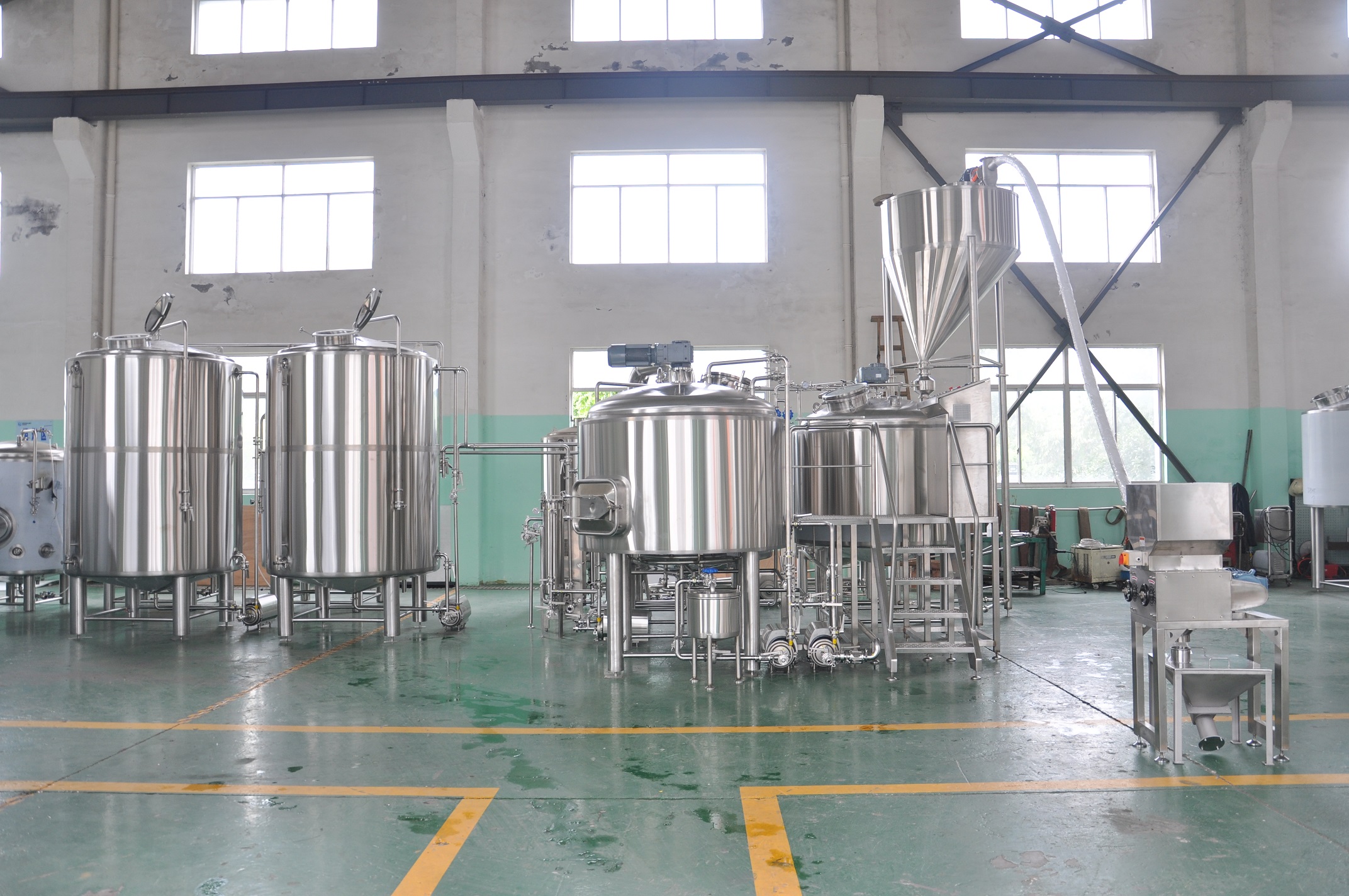
Thank you for reading this article about 20barrel brewing system. If you’re looking for a high-quality, durable, and easy-to-use beer brewing system, we recommend the brewing equipment brand NFE Machinery company, NFE brewing equipment has good reputation for overseas market, Selling equipment is only the beginning of cooperation between NFE and you. Our Real Purpose is to help you set up the brewery and we grow together!






